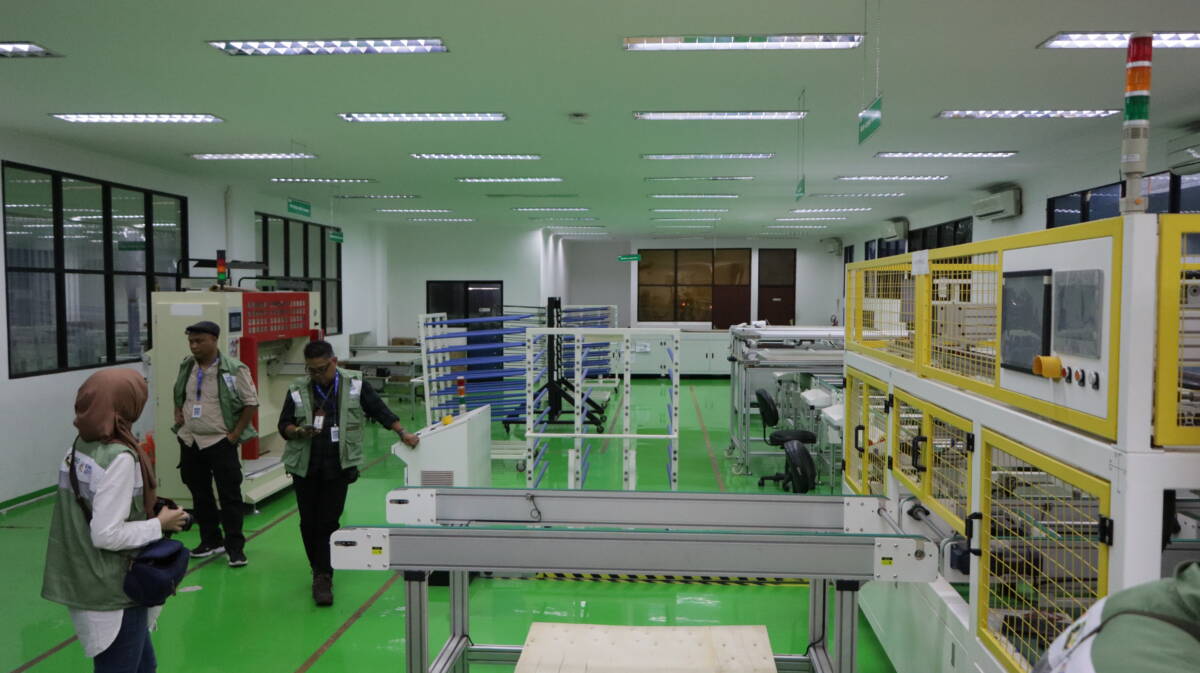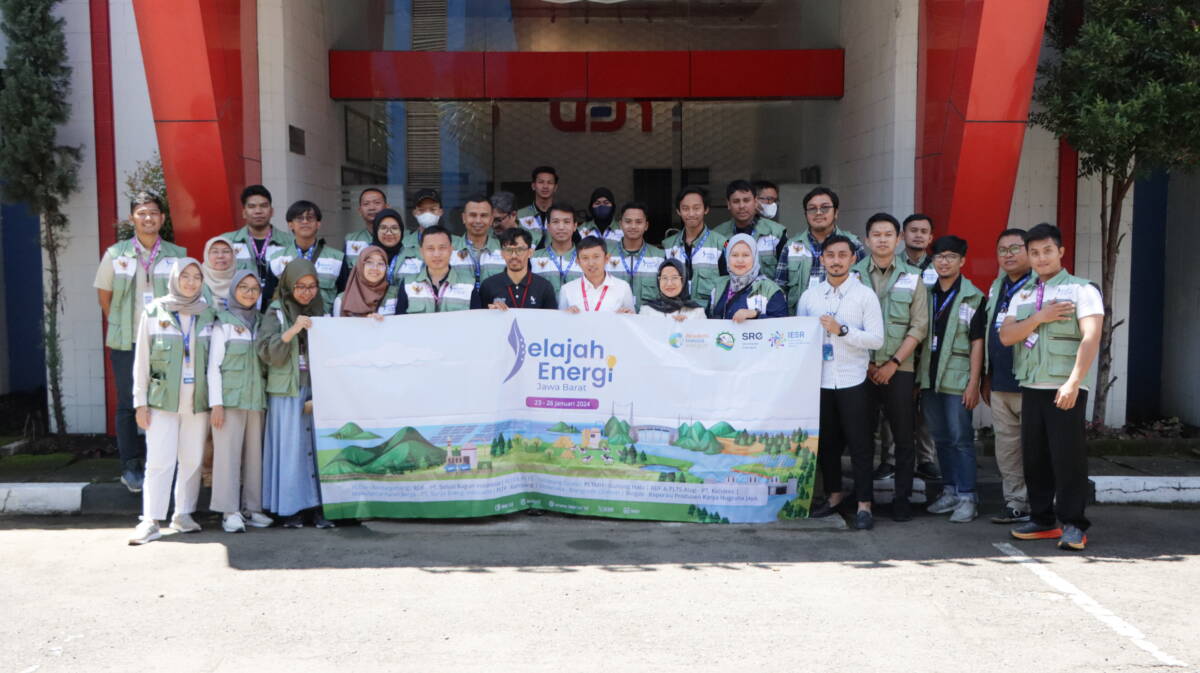Bandung, January 25, 2024 – Indonesia is blessed with abundant natural resources and committed to achieving the Net Zero Emission (NZE) target by 2060 or earlier. The industrial sector is crucial in this energy transition towards a sustainable future. Based on data from the Ministry of Industry (MoI), greenhouse gas (GHG) emissions from the industrial sector in Indonesia reached 238.1 million tons of CO2 in 2022. 2015-2022, it reached 8-20% of the total national GHG emissions. The most significant contributor to emissions comes from industrial energy use.
Reflecting on these conditions, the West Java Energy Exploration team continued to visit several industries on the third day to see the utilization of renewable energy. PT Kahatex, PT Surya Energi Indotama, and Pertamina Geothermal Energy Area Kamojang show how industry can be central in utilizing renewable energy.
Reducing Emissions from the Garment Industry Production Process with Renewable Energy
The apparel and garment industry, particularly those involved in the global brands’ supply chain, must improve their production processes. The Carbon Border Adjustment Mechanism (CBAM) requires the industry to measure the carbon emissions produced during manufacturing.
Dedi Supriadi, Sustainability Compliance of PT Kahatex Majalaya, mentioned that the textile industry is competing with international brands to reduce emissions and increase the use of clean energy technology.
“From 2021, we (Kahatex Majalaya, red) installed rooftop solar power plants as much as 15% of the installed power capacity. From installing this solar PV, we managed to reduce emissions by around 40%-50% from 7,567e-1 CO2/unit to 3,190e-1 CO2/unit,” explained Dedi.
Kahatex has significantly reduced its greenhouse gas emissions and is now looking into utilizing other renewable energy sources to reduce its carbon footprint further. Since 2022, the company has been exploring biomass as a source of heat energy, which involves co-firing with coal. Since 2023, PT Kahatex Majalaya has been using 100 percent biomass to meet its heat energy requirements for production.
Solar Energy Illuminates the Earth of Indonesia
Director of Engineering & Operations, PT Surya Energi Indotama (SEI), Fajar Miftahul Falah, explained that SEI, as a subsidiary of PT Len Industri (BUMN), is responsible for developing renewable energy, particularly solar energy. Fajar stated that the business itself was the most significant challenge SEI faced since its establishment. Many people doubted its existence as a solar company at the beginning of its establishment. The high price of solar power and the belief that Indonesia was not ready to accept the offer made it even harder. However, with the acceleration of solar energy technology development, the price of solar PV has become more affordable. SEI has been in the solar power plant industry for over 15 years, with a total installed capacity of over 60 MW throughout Indonesia.
“Approximately 70% of the solar power plant construction projects we are currently working on are situated in Disadvantaged, Frontier, and Outermost (3T) areas or areas near them. Solar PV in these areas is challenging due to difficult terrain, making it hard to access the sites and creating safety concerns,” said Fajar.

Operational room on PT SEI
Fajar mentioned that building solar PV in the 3T area is costlier than in other regions like Java. However, many believe the cost is the same in all areas. The fact is, while solar PV is affordable, the budget required to build it is expensive.
“We have been working on several solar PV projects, such as the Nusa Penida hybrid solar PV in Bali with a capacity of 4.2 kWp, the Merak Executive Terminal rooftop solar PV with a capacity of 324 kWp, and the Bakauheni Executive Terminal rooftop solar PV with a capacity of 192 kWp. Our main focus is on renewable energy, and we hope to contribute to Indonesia’s goal of achieving the NZE target by 2060 or earlier,” Fajar said.
Geothermal to Reduce Emissions
Raindrops welcomed the team from Jelajah Energi West Java upon their arrival at PT Pertamina Geothermal Energy (PGE) Kamojang Area. PGE is a PT Pertamina (Persero) subsidiary under the Upstream Directorate, which manages geothermal energy production from exploration activities to steam and electricity generation. The Kamojang geothermal energy sources are located in Ibun District, Bandung Regency, West Java, surrounded by beautiful pine forests.
Yustinar Uli, a representative of the PGE team, explained that PGE Kamojang Area became a pioneer of geothermal exploitation in Indonesia with the drilling of the first geothermal exploration well by the Dutch in 1926-1928. PGE Kamojang Area began operations on January 29, 1983, marked by the PLTP Unit 1 Kamojang operation.
“PGE constructed several units leading up to the PLTP Kamojang Unit 5 operation in 2015. Currently, PGE operates PLTP Kamojang Units 4 and 5 with a capacity of 60 MW and 35 MW, respectively. Meanwhile, PLTP Kamojang Units 1, 2, and 3, which have a combined capacity of 140 MW, are operated by PLN,” said Yustinar.
Yustinar reported that the geothermal plants in the Kamojang area have a total installed capacity of 235 megawatts (MW). This is equivalent to reducing CO2 emissions by 1.2 million tons annually. The electricity generated from these plants is absorbed by PT PLN and distributed through the Java Madura Bali (Jamali) electricity interconnection system.

